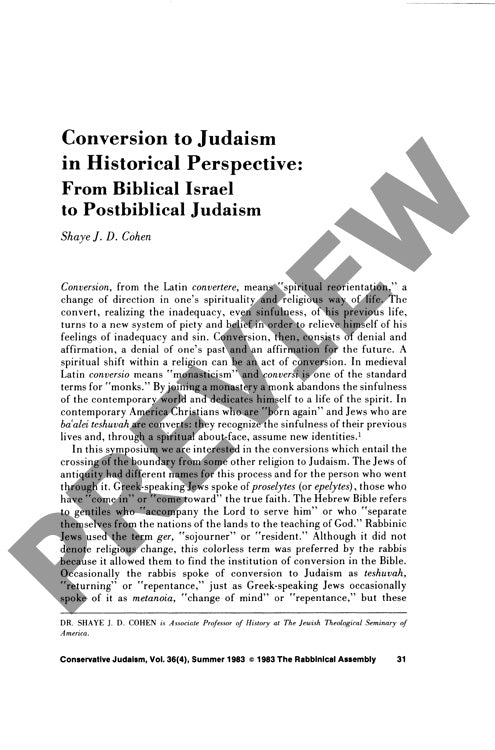Conversion to Judaism in Historical Pers
Couldn't load pickup availability
Judaism's dramatic evolution from a tribal faith to a universal religion centered on a pivotal innovation: the ability to convert. While preexilic Israelite identity depended solely on birth, ancestry, and land, the Babylonian exile of the sixth century B.C.E. catalyzed a revolutionary shift - the emergence of formal religious conversion. Through philological analysis of Hebrew and Greek terminology and examination of biblical texts, Josephus, Philo, and rabbinic literature, this research maps the transformation of Judaism's boundaries and beliefs. The dissolution of tribal structures and diaspora existence created conditions that allowed Judaism to transcend ethnic limitations, leading to significant legal developments during the rabbinic period. These included the establishment of formal conversion rituals (circumcision, immersion, and sacrifice), the matrilineal principle, and standardized procedures requiring rabbinical supervision. While Second Temple Judaism actively sought converts, rabbinic Judaism later adopted a more nuanced position - welcoming converts while avoiding active proselytization. This tension between Judaism's particularistic tribal origins and its universalistic religious aspirations produced a unique phenomenon in the ancient world: a conversion process that demanded both religious and national transformation.

More Information
-
Physical Description
-
Publication Information
Published 1983
ISBN
-
Publication Credits
Shaye Cohen

